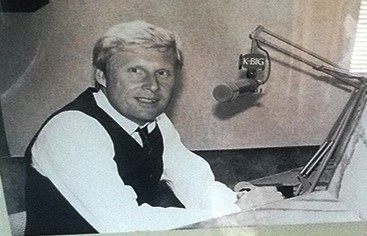
I was just about finished setting up my research project for my master’s thesis when a member of my committee, Professor M. David Merrill, ripped it apart. There goes my future I thought. Merrill was brimming with confidence, maybe even arrogance. He was one of those new academics who had made breakthroughs in “learning theory.” He was unmerciful in his critique of my work. However, shortly afterwards he called me to his office and gave me a chance to redeem myself. He wanted me to do a deep dive into the understanding of the “learning theory” he had created position papers on. I agreed and started over. I had to admit my project under his direction produced results that led to people using my thesis as they set up their projects. That grueling event took place at BYU in 1970.
In 1985, I came up with this idea to write a novel based in part on my real life experiences with an international gun dealer, who did business in the Middle East. An up and coming L.D. S. novelist, Gerald Lund, offered to co-author it with me. On the day the publisher produced the final copy for my review, I went to their office to read it. To my horror, my name was not included as co-author. I blew up at the publisher. Luckily, my good friend and mentor, Jack Adamson, president of KSL, accompanied me and intervened. Jack made it clear to the publisher the problems that would ensue if the problem were not rectified immediately. They were. But, my relationship with Gerry became stiff and cool after that. It never recovered. The novel hit the shelves and sold well. Its title was Leverage Point.
From the mid 1970’s on, my very close friend Fred Geddicks and I talked continuously about religion in America. We were both affiliated with the University of Southern California at the time, and several years afterwards decided to write a book on the future of religion in America. That book was published in 1990 and predicted an uprising of religious fundamentalism that would end in violence and ultimate accommodation. Thirty years later the book still sells for $84 at Barnes & Noble. Before the book went into final printing, I was the lead author on the book at Fred’s direction. But, it was a bit ahead of its time in that it used the pronoun her instead of him throughout all the chapters. Because I was on the verge of being called as a mission president, it was suggested that for political reasons I put my name second and Fred’s first to avoid any controversy that might take place. Fred thought I was crazy. Time has proven him correct. Fred went on to become a distinguished professor of constitutional law at BYU, and I had already become an award winning radio commentator specializing in social, political and economic trends.
I have associated with some pretty wild guys in my life, but none to top Rob Brazell. I met him after a lecture I gave at the KSL TV and Radio studios. Rob was there and came up to me afterwards and asked me to do some speaking and consulting for his company. He ended up buying my consulting firm when I moved to Santiago Chile to be a mission president for the Mormon church. I returned after three years, and Rob’s company had tripled in size and was having all kinds of regulatory challenges with the FTC and the Utah Department of Consumer Protection. Rob reminded me that when he bought my consulting firm it also included my unfinished manuscript on the book, the Idea Economy. He offered to publish it if he could be the co-author. He made some important contributions to the book, but the theoretical model that held the book together was my invention. This book did for the future economy what Fred’s and my book did for the future of religion. Rob went on to start an exchange where people invested in ideas solely. Wild man. When his original company went bankrupt, he started a new company that eventually morphed into Overstock.com, a billion dollar enterprise. Our book was published in 1995. Finally after two other books, I became the lead author on the book cover. I was exhausted after that engagement, but prevailed by starting my second consulting firm in 1996 – Hendrix Consulting.
After that experience, I decided to write a book without a co-author. In 2010, my son’s company, Green Tea HP, published that book, which is entitled Bend, Create, and Plan Your Future. The book lays out the strategies I used as a management consultant to help companies succeed. Roger Jr. invited me to be a partner with him in starting Green Tea HP. That was in 2007. After I thought my days were over with the book, the most famous post Mormon of them all, John Dehlin, invited me to give a series of nine interviews on his podcast, Mormon Stories. The last one took place this past May. I was asked to apply the book’s principles in forecasting the future of the Mormon church. In one month over thirty thousand views have been recorded with 525 comments. Amazing, absolutely amazing.